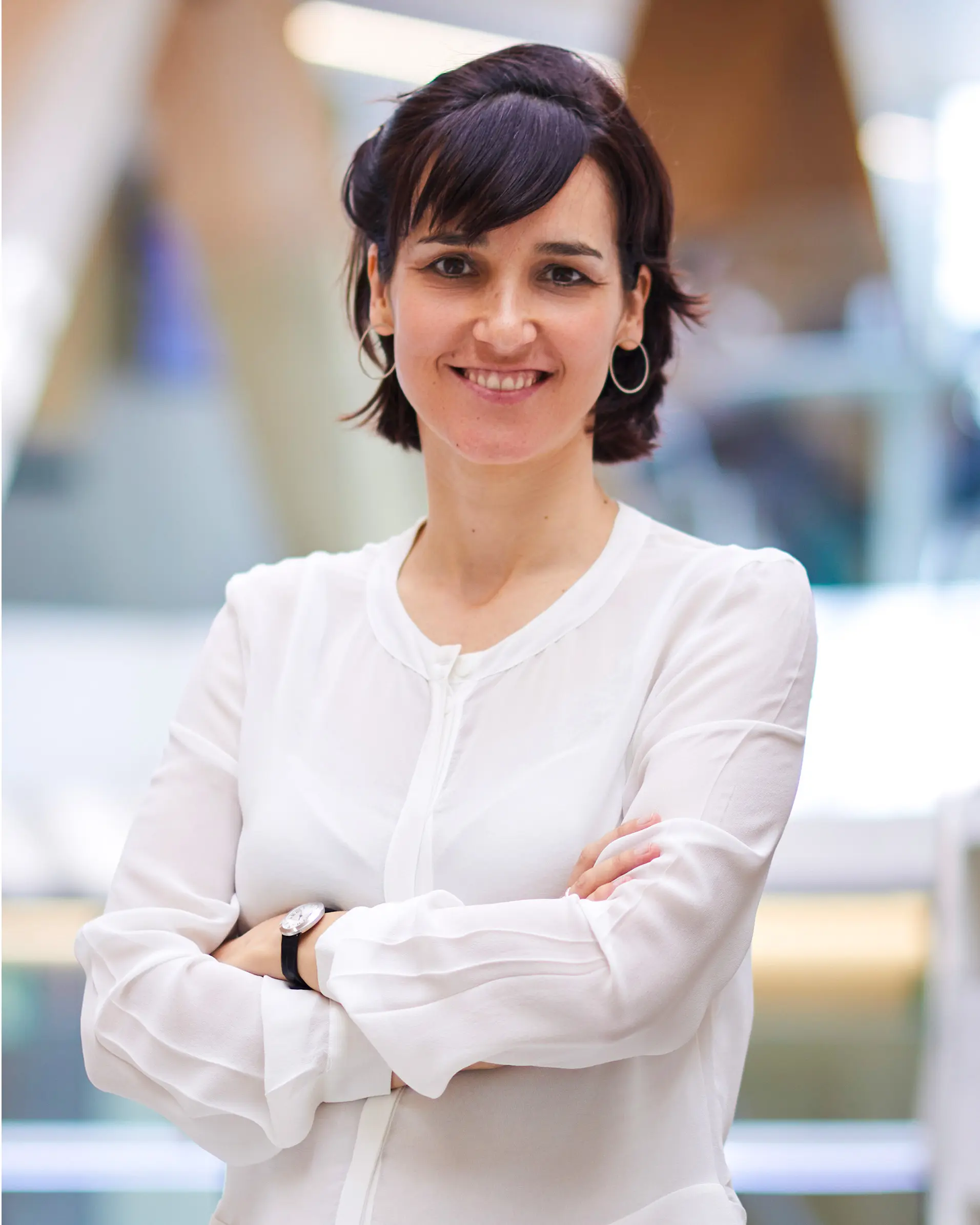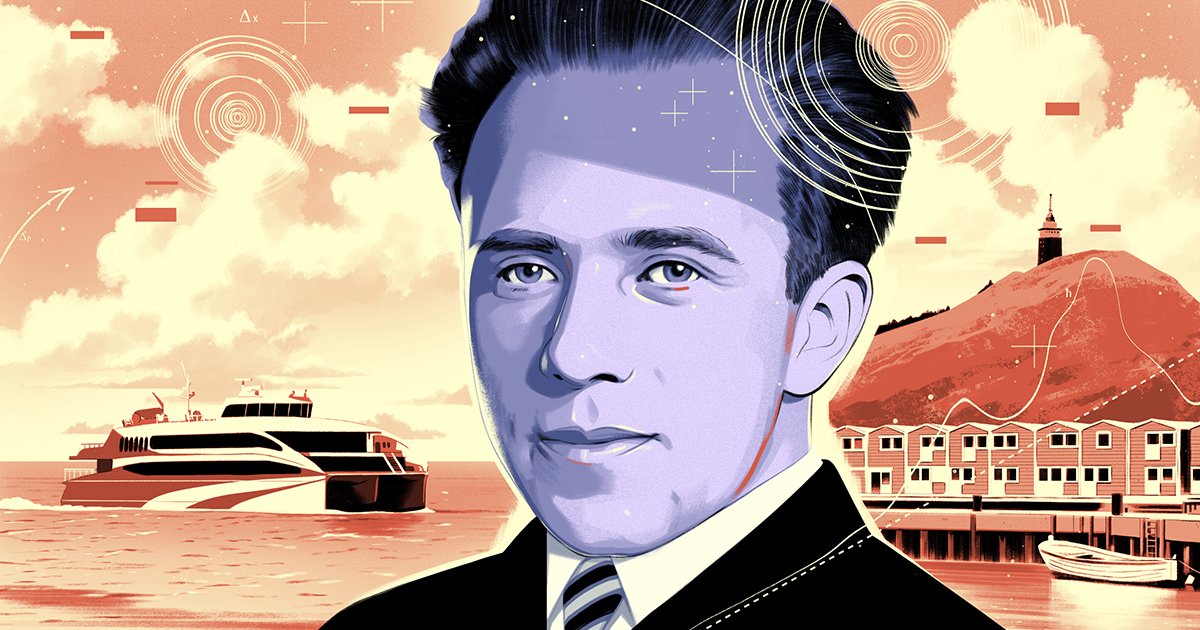Those Who Don’t Know
The evening before Fuchs and I had lunch, he had given the first official physics talk of the conference, a lightning review of QBism and a report on some conjectures in number theory that QBist thinking had helped him make recent progress on. His closing words at the end of the question-and-answer session following the talk were, “QBism is here to stay. You won’t get rid of me.”
Then Gisin took the stage to discuss the nature of measurement and started his talk with an improvised dig at the QBist perspective. “Physics is all about extracting information about how nature does it. Nature,” Gisin said, pausing for emphasis and looking slowly out over the audience, “not agents.” The audience tittered. (Fuchs later told me they had carried their friendly sparring about the finer points of QBism to the local watering hole that night.)
I caught up with Gisin the next evening for dinner. Or at least that was the plan, but I joined him and his graduate students a few minutes after 6 p.m. The restaurant’s kitchen had just closed. He stood up for me, exchanging sharp words with the server. It was not the only testy encounter I witnessed between punctual islanders and the looser, often hungry physicists. “The island is stuck in the 1960s, as opposed to the rest of Germany, which has at least made it to the 1970s,” Burgarth, a native German, complained. “It’s cash only, no English, has crap food, and everything closes at 6. Although everyone is very nice.”
Gisin was kind enough to share with me both his seafood bouillabaisse and his vision for how to demystify measurement. He pointed out that the quantum state used in the Bell test — the white lab rat of quantum physics — is an exceedingly unusual state. Taken individually, Alice’s measurements and Bob’s measurements both appear completely patternless. Half the time, Alice measures one outcome, and half the time she measures a different outcome. It’s only when the two bring the lists together that they see Bell’s mysterious pattern of correlations emerge. There is information in pairs of particles, but not in individual ones.
I do not understand quantum mechanics. I don’t know if the quantum state is a description of reality or a way to place bets.
Gemma De les Coves, Pompeu Fabra University
But almost any other state will be different. Imagine a state where Alice gets one outcome 70% of the time and another outcome 30% of the time. She will see a pattern in her data. And she may discern a second pattern when she compares notes with Bob. In this case, their particles carry both “local” information — the pattern that Alice and Bob can discern on their own — and the “nonlocal” information that emerges only when they compare notes. When particles share both local and nonlocal information, how to measure them and extract that information is not so clear.
Gisin hopes that by fooling around with measurements of these more exotic states, physicists will come to better understand the role of measurement in general. He doesn’t know what the conventional wisdom will become when that happens, but he hopes that measurements will be seen to have one unique outcome (ruling out many-worlds), and that the world out there exists and can be described by rules that don’t depend on the actions of agents (ruling out QBism).
Helgoland’s anti-Fuchs was Gemma De les Coves, a soft-spoken physicist from Barcelona. “I do not understand quantum mechanics,” she declared. “I don’t know if the quantum state is a description of reality or a way to place bets. I would love to know if there are many worlds, and if I am splitting into many Gemmas as I speak.”

Gemma De les Coves, a physicist at Pompeu Fabra University in Barcelona, studies metaphysics and the meaning of quantum mechanics.
De les Coves began her career in physics studying the ways that information behaves in quantum systems. But she eventually grew dissatisfied with the clashing instructions for how the quantum state evolves: according to the Schrödinger equation at some times and by collapse at others. “You cannot swallow them,” she told me the next day. “They are a bunch of mathematical recipes, and they are inconsistent.”
Over the last few years, she has contributed to a research program that aspires to coax the quantum omelet to unscramble itself by infusing it with increasing doses of realism.
Last year, De les Coves and her collaborators studied a simple theory of a classical universe — one populated with objects in definite states, such as particles that are each in a specific spot. Then they put an agent in the theoretical universe and calculated how much the agent could learn about the particles according to classical physical laws. Surprisingly, they found that the agent couldn’t learn everything. As a necessary consequence of being trapped inside the universe, the agent would perceive certain particles as having a quantumlike state with multiple possible positions, even though from the God-like view outside the universe the particles do have real, specific positions. It’s only a simple model, but if our universe works the same way, then the simultaneous possibilities of ψ could be an artifact of our also being trapped inside our universe.
De les Coves’ work complements years of research from Robert Spekkens, a physicist at the Perimeter Institute. He has shown that in any world where agents are ignorant of details like exact particle positions (even if those positions do exist in a fixed, classical sense), that ignorance leads to a laundry list of allegedly quantum phenomena, such as the “teleportation” of a quantum state from one particle onto another. “If you have a classical model where you cannot know some things,” De les Coves said, “surprisingly, you can reproduce many things that appeared quantum.”
I chased down Spekkens as we were leaving the lecture hall on another afternoon. Since he’s been able to derive quantumlike effects from largely classical theories, does he think that reality might turn out to be classical after all, I asked — that Bell particles might have real, fixed properties before they get to Alice and Bob? He told me that someday he suspects physicists will look back at questions like that and realize they don’t make much sense, because a new way of thinking about reality will have subsumed both classical and quantum physics.
He brought up the omelet again and said that he’s been picking away at the knowledge side of it, deriving exactly how much of the canon of quantum weirdness can be chalked up to our ignorance. He’s found that quite a bit of ψ’s quantum strangeness — perhaps more than most people realize — can be explained if we assume it represents information as opposed to a physical entity. But it can’t all be explained that way. The remaining piece — the part we might call reality — he suspects will be largely about how one thing influences another.
“I think the essence of reality is causal connections,” Spekkens said.
As a loose metaphor, he suggested I picture a sort of black-and-white mosaic. I imagined one that portrayed a northern gannet of the sort I’d seen nesting on the cliffs during a walk around the Helgoland plateau. Based on our classical experience, we are accustomed to knowing the specific color of every tile. Perhaps, Spekkens suggested, that’s not essential. After all, if you flip every tile to the opposite color, you’ll still see the gannet’s silhouette. It’s the relationships between the tiles that matter, not their definite state.
Similarly, if physicists can fit both quantum and classical physics under some shared umbrella of realism, the specific states of the particles themselves might be meaningless compared to the way they can influence each other. “Maybe that’s sufficient to have a notion of reality,” he said, but “that’s the part where I know the least about how things are going to work out.”
Gravity to the Rescue?
Buffeted by dozens of competing accounts, I often felt as if we were little closer to understanding the nature of reality in 2025 than Heisenberg was in 1925. Some researchers also felt that a certain ennui has settled over the effort to interpret quantum mechanics. “What do we do when we’ve been working on a problem like this with some very great minds for the last hundred years?” asked Elise Crull, a philosopher and historian of physics at the City College of New York.

